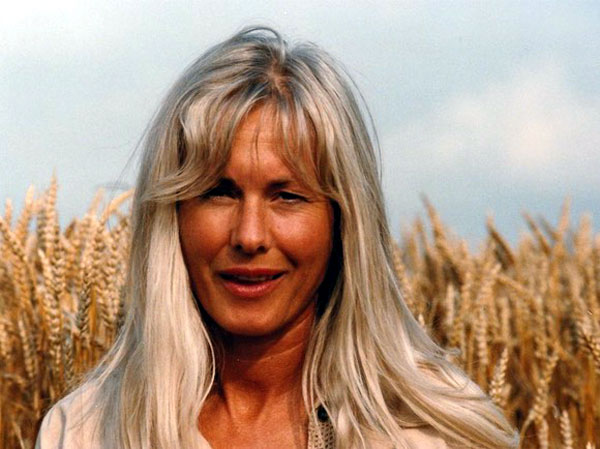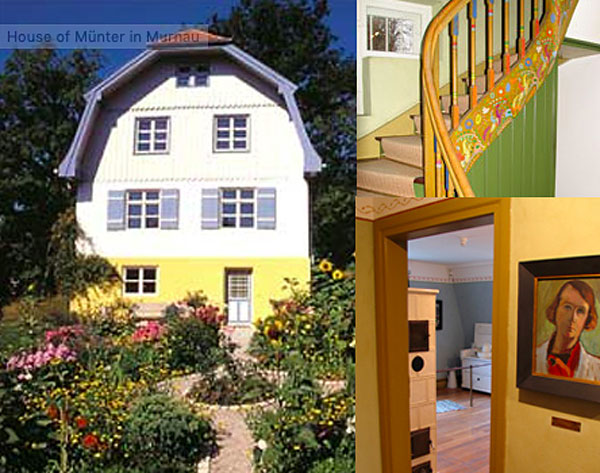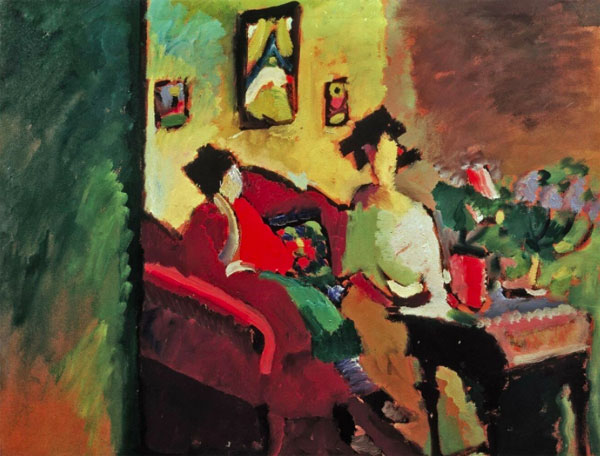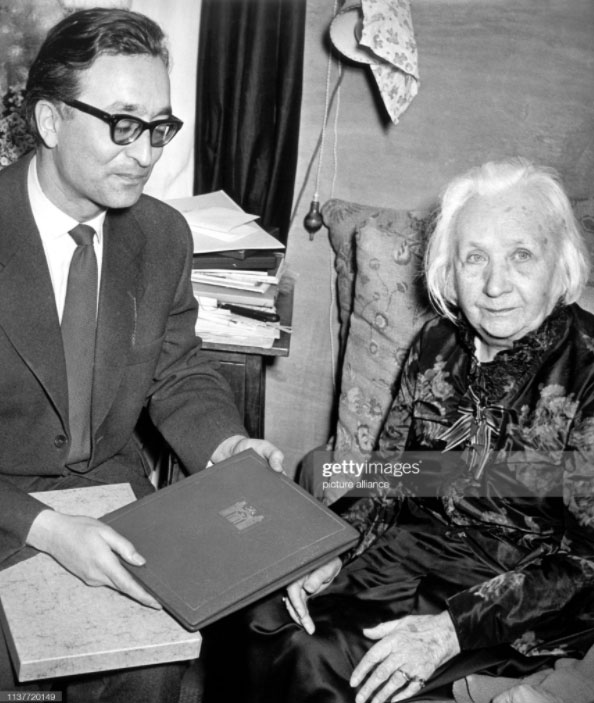|
Not that I have ever been eager to meet famous artists; it just happened that way… So now, at
the age of 83, and thanks to a much-practiced memory, I am asked to share, informally, the following memories of my visit with the artist so closely associated with
Kandinsky.

Dr. Jelena Hahl-Fontaine in her student days, around the time of
her visit with Münter.
When I was still a university student in Heidelberg, Germany, I occasionally translated into German Kandinsky's handwritten Russian
texts, held in his Munich archives a few hours away at the Lenbachhaus museum. [Jelena went on later to become Curator there. -ed.] Once, in the
winter of 1961, the museum's director, Hans Konrad Roethel, suggested that I pay a visit to the artist Gabriele Münter, who had been Kandinsky's
partner from 1902 to 1914. At that time, Münter was again living in the house in Murnau, south of Munich—nicknamed the "Russian House"—
where she and Kandinsky had spent much of their time, inspired by the picturesque pre-alpine landscape. (Kandinsky later described the specific
atmosphere in Murnau: "the air was thundering," compared to the "diffuse white light in Paris.")
"Why should I disturb such an elderly lady?" Roethel assured me: "You
would be sorry later to have missed this opportunity. She is 85 and
quite ill." – So I prepared a list of questions…

Exterior of the "Russian House"; interior, with a glimpse of Kandinsky's
staircase with folk painting
The "Russian House" had hardly changed: Kandinsky's painted staircase, his painted furniture, and so on.
Truth be told, I had gone mainly hoping to hear Münter's comments about
Marianne von Werefkin, about whom I was writing my doctoral thesis. The Russian emigrants Kandinsky and Werefkin were associated through
artists' groups of the time, which also included the German native Münter.
Knowing that Kandinsky hadn't always "approved" of Werefkin, I remained
a bit skeptical as to what I would hear. Once, for example, Kandinsky had remarked in a private letter to Münter from Moscow, where he had just
made the acquaintance of avant-garde painter, Mikhail Larionov: "a good theoretician, somewhat like Marianne, but smarter." Another time he had
written sternly of Marianne's plunging neckline!

Kandinsky's "Interior. Gabriele Münter and Marianne von Werefkin" (1910).
In the event, I was relieved that Münter didn't say anything at all negative
about Werefkin. There had been a time when Münter was touchy and hurt imagining that Werefkin looked down on her, but she put it behind her and
wrote Kandinsky that Werefkin had come to visit her. Indeed, it was something of a compliment for Münter to be visited by the much older
Baroness, "noble" in every sense. Münter even credited the Baroness with having been the emotional center of The Blue Rider artists' group, while
Kandinsky was the undisputed intellectual center.
To my surprise, Münter insisted that they didn't "philosophize" with their
friends, but rather, purely discussed questions of methods of painting.
From there on, there was no more chance to ask anything else! Although I
had found Münter in bed, speaking slowly (she was short of breath) and being cared for by a nurse, it was she who started questioning me—about
the building of the new Guggenheim Museum in New York City, which I had just visited. She showed such eager interest in that new, original
museum: just imagine—a round building! Walking up those serpentine ramps, doesn't one get dizzy? Are they wide enough? How could paintings
ever be fastened on round walls? How sorry she was not to visit it herself! And what general impression did I have? She also wanted to know more about my work, etc., etc.
Surprised but happy with the elderly artist's lively interest in art, museums,
buildings and more, I did not insist on my prepared questions, and ours became quite a long conversation. We were interrupted twice by the nurse:
"Frau Münter needs to rest," to which the aged artist responded with a resolute "No!!" And so we continued our visit. Yes, it was more important
that Münter, at the end of her life, should be happy.
So that is what there is to tell about our "reciprocal interview." She made
such a positive and friendly impression on me during our visit. She died shortly thereafter.

Gabriele Münter in her home in Murnau, where Jelena visited her.
On February 19, 1957, on her 80th birthday, Münter received the
City of Munich's Golden Plaque. She died on May 19, 1962.
|